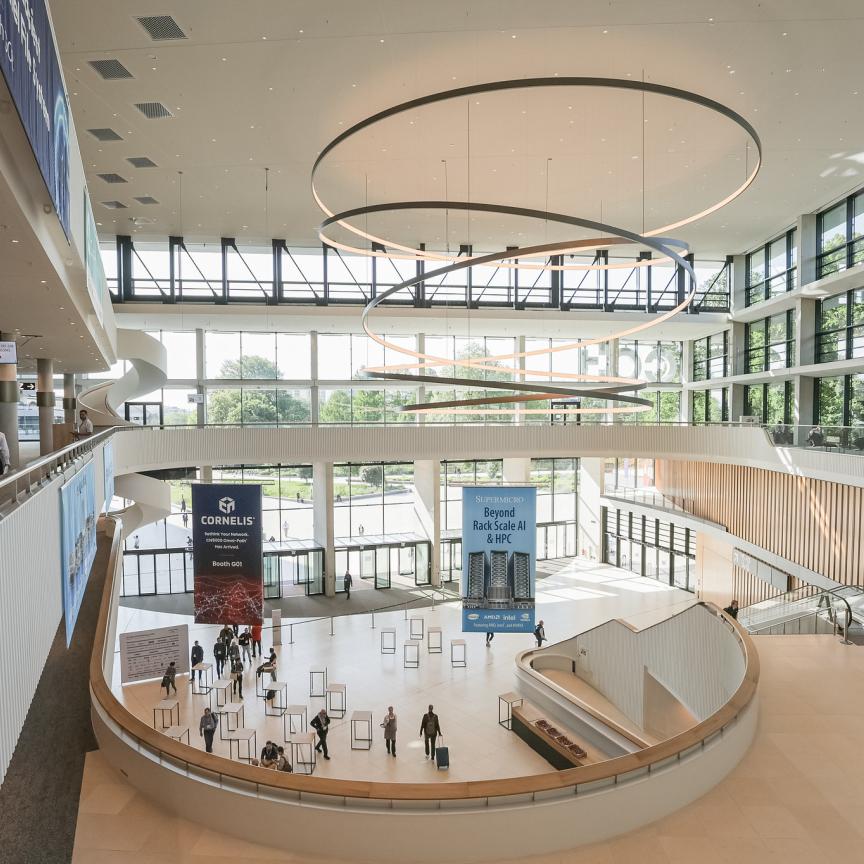In the third of his reports from the Paperless Lab Academy in Amsterdam earlier this month, Tom Wilkie asks if the end is in sight for the traditional quality control laboratory -- and the laboratory informatics software that goes with it.
Lab informatics software faces a challenge from the rise of web and cloud-based services, as analysed in the previous report from the Paperless Lab Academy, held earlier this month in Amsterdam; and any shift to the paperless lab needs to be carefully managed. However, informatics software may be under threat from a different direction – not on-line but in-line quality assurance -- the growth of interest in process-analytic quality assurance rather than end-product quality control.
Today, many manufacturers still rely on end-of-line quality control (QC), or ‘quality by testing’. In-line quality assurance (QA), on the other hand, focuses on what happens throughout the manufacturing process rather than taking a snapshot of the output at the end. It thus offers a way of feeding back information while the manufacturing process is continuing and thus preventing errors before they arise.
The implications are profound – both for the laboratory and for the vendors of laboratory informatics software. Jan Verelst, from Siemens, summed it up in one question to the Paperless Lab Academy – not entirely a rhetorical one – ‘Do we need to stay with the traditional QC laboratory?’
The idea of Quality by Design (QbD) has been promoted by the US Food and Drug Administration (FDA) as a way of improving productivity and reducing manufacturing costs in the pharmaceutical industry. One critical underpinning technique is ‘process analytical technology’ (PAT) -- software that makes it possible to measure critical quality attributes and process parameters in-line, allowing running processes to be adjusted in real time. As Verelst put it: ‘While we are making it, we are predicting the quality of the final product. The lab is no longer needed to measure end-product quality, because it was done in-process.’
It is, he said, not on-line but in-line quality assurance. By verifying product quality in several steps during the process rather than at the end of the line, batch release times can be shortened and yield improved. The process allows supervisors to see trends and correct the composition of a batch that is threatening to go out of spec before it reaches unacceptable values.
The penalties of waiting for results from the QC lab were graphically illustrated by another contributor to the Paperless Lab Academy who recounted how one pharmaceutical manufacturer lost a batch of product worth up to $20 million. It was a short-lived product which expired on the quayside while waiting to be loaded on a ship for export. Unfortunately, the certificate of analysis from the laboratory did not arrive until after the batch had expired, so it all had to be thrown away.
What then, does the future hold for the traditional QC lab and for its associated informatics software, if this brave new world of process-analytic software comes to pass? Jan Verelst believes it might still have a future at the input end of the process – verifying that raw materials coming from suppliers are in accordance with the required specification.
However, even this may not be the saviour of the lab, as the PLA heard how medical device company Medtronic was trying to cut down on the analysis of materials coming in. According to the company's Iraida Quinn, a ‘supplier-owned quality programme’ at Medtronic’s premises in Galway, Ireland, was pushing quality control back to the suppliers themselves.
Medtronic has opened a web portal using the PerkinElmer iLab and a SAP QM connector. When Medtronic places an order through its SAP, the system requests samples that have to be tested by the supplier to check conformity with Medtronic’s specifications and the supplier enters the results through the iLab portal. Provided the test results meet the specification, the system generates the authorisation for the supplier to ship to Medtronic. Thus the workload on Medtronic’s own QC laboratory is cut back.
Peter Boogaard, the chairman of the Paperless lab Academy, believes that changes in the role of the traditional QC laboratory are inevitable and that there are profound implications for its associated informatics software. Quality assurance may indeed be done in-line, he believes, to avoid the waiting times for samples to be sent to the lab for analysis and results returned to the production plant.
Such a change in the role of the laboratory may well bring changes for laboratory software in its wake. According to some observers, it could mean the end of LIMS as a stand-alone piece of software and its incorporation into Product Lifecycle Management systems.
But Boogaard believes that there are ways to prevent the lab from going out of business. On option, he believes, could be for it to switch to problem-solving. If something has gone wrong on the production line, then the lab can create a new and valued role for itself by identifying what has gone wrong and coming up with a solution – moving from routine testing of product to the appliance of science to the process itself.

